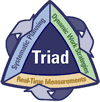
| Site Name | Seymour Johnson Air Force Base |
| Location | Goldsboro, NC |
| Site Types |
|
| Project Lead Type |
U.S. Air Force Lead |
| Reuse Objective Identified |
No |
Seymour Johnson Air Force Base, a 3,216-acre site in Wayne County, NC, is the home of the 4th Fighter Wing (4 FW) and the 916th Air Refueling Wing (916 ARW). The base is in the southeastern city limits of Goldsboro, NC. Residential areas neighbor the base on the north while agricultural land uses and open space are adjacent to the base on the east and south. Stoney Creek establishes the western base boundary. The OT-29 Radar Tower site was a two-acre site; an interim remedial action was in place to intercept contaminated groundwater before it entered a creek. The Air Force required the site to be cleared for a future mission-critical development. Groundwater contaminants of concern include total petroleum hydrocarbons, benzene, toluene, ethylbenzene, total xylenes, and chlorinated ethenes (TCE and daughter products). The remedial action objectives (RAOs) for this site were to restore groundwater and soil quality to standards required by the North Carolina Department of Environment and Natural Resources (NC DENR). Although this site is not listed on the National Priorities List (NPL), the Department of Defense (DOD) uses National Contingency Plan (NCP) protocols for site remediation, and a Record of Decision (ROD) was prepared for the site.
The Triad approach was used to build a functional and productive Systematic Planning Team, accelerate site characterization, and remediate a new area of contamination seamlessly with previously known areas. Systematic planning facilitated rapid development of a remedial action strategy. The technical team processed and interpreted data from the field, and the remedial strategy was developed directly from the team efforts. Systematic planning made it unnecessary to stop action when the membrane interface probe (MIP) discovered a new area of contamination, and facilitated rapid development of a remedial action strategy. Dynamic work strategies prevented equipment downtime, resulted in fewer costly analytical samples, and reduced the overall site characterization time-frame. A streamlined ROD was signed within 18 months of the first planning meeting. Cost savings were realized in fewer mobilizations. Remedial action included a biopile for on-site treatment, which saved 2,000 tons of off-site disposal. The approach met all client goals for an unencumbered site.
Rapid delineation saved $60,000 and six months. Life-cycle cleanup cost savings were $1.8 million and 12 years over the existing pump-and-treat system. Forward First Planning (F2P) accelerated remediation savings were $200,000 for new construction.
The design/build team met with all stakeholders, the NCDENR regulator, Base Environmental Restoration Program (ERP) Manager, and U.S. Army Corps of Engineers, and developed an approach to achieve accelerated cleanup. A preliminary conceptual site model (CSM) was developed using data from past investigations, and the team identified real-time measurement technologies and decisions to be made in the field. The planning team daily received and reviewed investigative data, which allowed continuous updates in real time. Innovative in-situ remediation technologies were evaluated for feasibility and costs. Current and future land use for the site was incorporated into the remedy selection. The remedial action plan was a product of consensus by all stakeholders.
A dynamic work plan supported field decision-making and rapid advancement of the CSM. Decision trees guided field personnel in using real-time data. Soil and groundwater samples were collected to confirm that they were clean or to estimate contaminant mass.
A MIP enabled determination of source area and extents, and analyzed 55 points; MIP data were incorporated into a 3-D graphical model and provided real-time via a secure Web site for use by the project team, including regulators. Photoionization detector (PID) headspace analysis was performed on potentially contaminated soil. Direct push technology (DPT) was also used to collect confirmation soil and groundwater samples for quick turn analyses.
Not available
To update this profile, contact Cheryl T. Johnson at Johnson.Cheryl@epa.gov or (703) 603-9045.